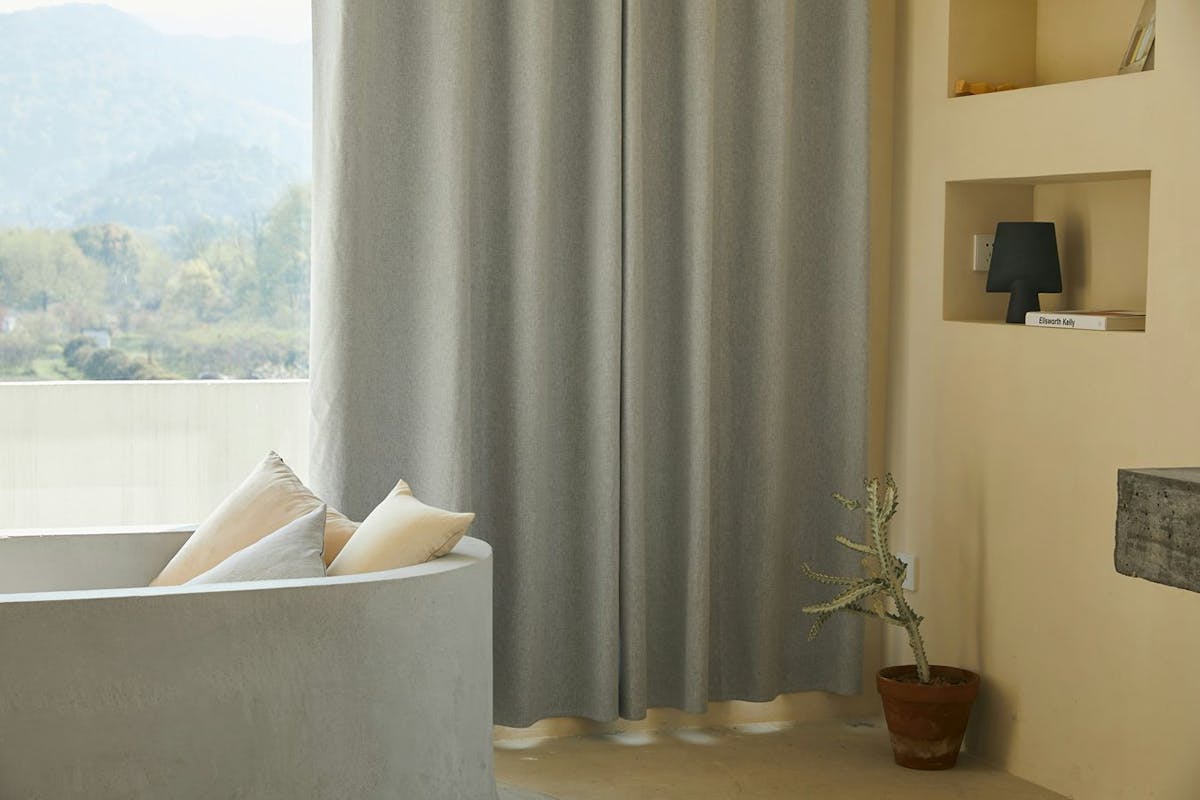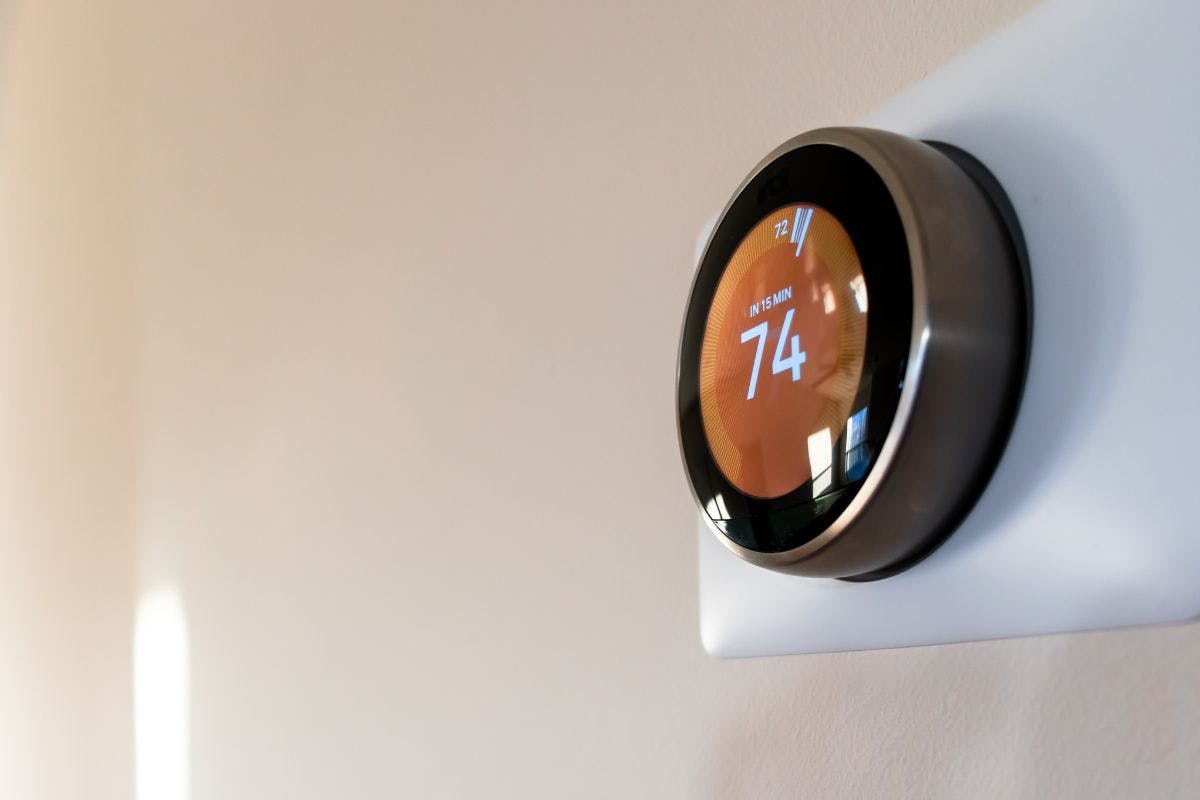How to Use Window Coverings for Energy Efficiency
Last edited

Author
Andrew Giermak
Solar and Electrification Writer and Editor

Editor
Andrew Blok
Electrification and Solar Writer and Editor

You may think about how your home’s window coverings, inside and out, look, or you may barely think of them at all. Windows and window treatments are actually a major factor in your home’s heating and cooling efficiency. Windows are a way to use or limit solar heat energy and an important part of your home’s air sealing. Your window treatments and how you use them can give you comfort and savings.
See how much you can save with home energy changes
How Window Coverings Affect Energy Efficiency
Curtains, blinds, shutters, awnings, and even trees and landscaping, can affect solar heat gain and loss and air gain or loss in your home. How you use window coverings can change how much energy your HVAC system uses, giving you utility bill savings year-around.
In the cooler times of year, the main ideas are to let more sunlight into your home and to let less heated air escape out of your home envelope, which your windows are an important part of.
When it’s cooler but sunny outside, sunlight coming in through your windows can warm up your house.
While letting sunlight in, keeping warm air from leaking out at windows is equally important. Caulking and weatherstripping windows properly is a major step along with being able to close curtains, blinds, and shutters. This all works together to stop drafts.
In the summer, you want to keep sunlight and warm air out and to keep cooler air in. According to the Department of Energy, standard double-pane windows with no window covering of any kind let 76% of the sun’s energy into an indoor space.
To avoid that, you can add curtains and blinds inside your home or awnings, shutters, and plants outside.
Insulation, caulk, and weatherstripping can help prevent heat creeping into your home in the summer, like it keeps heat from escaping in the winter.
Benefits of Energy-Efficient Window Treatments
There are a number of window coverings and treatments to consider. How high you rank energy efficiency along with factors like style, cost, and ease of use is up to you.
| Covering or treatment | Common usage |
|---|---|
| Cellular or honeycomb shades | Honeycomb-shaped cells create insulation and trap air; excellent for heating and cooling year-around. |
| Heavy or lined drapes | Creates sealed air in a gap between the drape and the window; best when closed at night to keep heat inside. |
| Exterior solar screens or awnings | Block solar heat and are most effective on south-facing or west-facing windows. |
| Reflective blinds | Reflects sunlight when slats are closed and lets sunlight through when open. |
| Solar shades | Made with dark, thick fabric to absorb sunlight and reduce glare, good for keeping a home cooler. |
| Low E or reflective window film | A thin film on a window that reflects solar energy, best for keeping heat out while maintaining a view out of the window. |
You can make energy-efficient improvements with treatments or additions to your windows inside and out. Here’s how different coverings are good options, depending on what you’re looking to do.
Interior window treatments
- Blinds: Blinds can help with home heating and cooling and energy efficiency by decreasing solar heat gain in the summer. Blinds also reduce heat loss in the winter.
- Cellular shades: Shades with cells, sometimes called honeycomb shades, create insulation and trap air in the space between the shade and the window. This limits air loss year-around and can give you shade when you want it. Cellular or honeycomb shades are generally the best energy-efficient window covering. The cells or honeycombs create small cells of still air which has an insulative effect. Cellular shades have a high R-value.
- Roller shades: Roller shades give shade and can be made of reflective or blackout material to more effectively block heat. They create an extra barrier to keep heat inside in the winter.
- Roman shades: Roman shades are a continuous piece of material which creates a good seal, creating a pocket of air between the shade and a window to slow heat loss. They also give shade in the warmer months.
- Window panels: Interior window panels improve energy efficiency year-round by being an air-sealing layer and an insulation layer. This can be a cost-effective option to a full window replacement.
Exterior window treatments
- Shutters: Shutters outside your windows provide a thermal barrier against cold and more shade in hot weather. They are also added protection in extreme weather.
- Awnings: Awnings can be fixed or retractable so you can control the amount of shade they give. More shade near windows and the exterior of a building makes interior cooling more effective and energy efficient.
- Solar control window film: A thin, adhesive layer applied directly to the exterior of a glass surface. The film reflects solar radiation to reduce heat gain.
- Storm windows: Storm windows improve energy efficiency year-round by being an air-sealing layer and an insulation layer, along with being a protective measure against storms and severe weather. This can be a cost-effective option to a full window replacement. The Department of Energy says low-e storm windows save about 10-30% on heating and cooling costs when used with existing single-pane windows.
See how much you can save with home energy changes
Which Window Treatments are Most Energy Efficient?
Combining interior and exterior window treatments provides the best in energy efficiency and cost savings. Putting up window treatments which are easily adaptable to the season or give you both heating and cooling efficiency benefits is another good consideration.
The most energy-efficient interior window treatments during the heating season are those that create the highest amount of insulating air space — an air gap between the covering and the window — to slow down heat transfer. Cellular shades, Roman shades, and heavy curtains create air gaps. Look for shades that form-fit to your window frame. Some shades may also have a thermal layer. With curtains, you want heavy, multi-layered material, and curtains which drop tight to the floor, for the best heat retention.
In the cooling season, the big goal inside and out is to have shade. Shade on the exterior of your home’s envelope, including windows, eases the workload on your cooling system as it keeps the exterior of your home cooler later into a hot day. Shade inside your home means less heat energy for your cooling system to remove. Less solar energy and more help for your HVAC, like running ceiling fans, which can make an interior space feel about four degrees cooler than the actual temperature, is an energy and utility bill saver. Shades or blinds inside and awnings or plant-cover outside both provide shade.
For more ideas about comfortable heating and cooling while saving money and energy, check out Palmetto’s Savings Maximizer or the new Palmetto app, where you can earn discounts for energy upgrades when you use the app to save energy.
See what home electrification can do for you:
Frequently Asked Questions
What can I do to make my windows more energy efficient?
You can add or improve caulking and weatherstripping around your windows to help the air sealing of your windows. You can put up coverings such as blinds, shades, curtains, shutters, and awnings. You can use film or storm windows to give more layering or insulative strength.
What is the most energy-efficient window covering?
Cellular or honeycomb (hexagonal) shades have the highest R-value of any type of window covering, or insulation against heat transfer. Still air, inside the cells or honeycombs, has a naturally high insulative effect.
Are blinds energy efficient?
Yes, blinds are energy efficient as they create shade, when you want to keep your interior cool, and can be opened to have sun, when you want natural solar heat inside. Blinds, however, generally do not have as high an R-value as some types of shades or curtains.
Are insulated window coverings worth it?
Insulated window coverings, such as cellular shades, drapes, or curtains with a thermal layer, are usually worth it for comfort and energy savings. The Department of Energy states cellular shades can save you about 10% on heating energy in the winter and can reduce solar heat gained through windows by about 60% in the summer.


